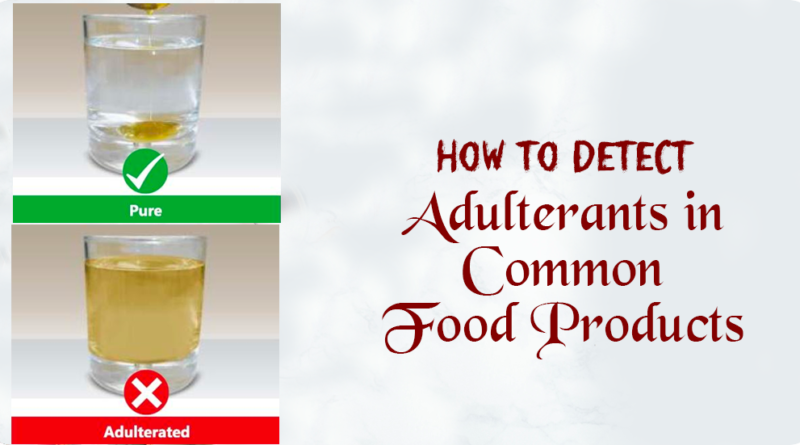How to detect adulterants in common food products
We are dependent on food for energy, repair, growth and development of our body. We consume food daily, thus the quality of the food matters a lot. But the practice of contamination of food is common these days.
Adulteration is done to earn profits, increase sales, production, etc. that lead to the addition of cheaper ingredients, chemicals, toxic substances to the food product to increase their quantity. It can also lead to several health issues and complications.
Therefore, it is important to equip yourself with the basic knowledge as to how you can identify some common adulterants in food products. This article talks about some basic test through which you can identify adulterants in common food products:
• Test to detect the presence of other oils in coconut oil:
Take a sample of coconut oil in a transparent glass container and store it in the refrigerator for 30 minutes. Do not keep it in the freezer. The coconut oil will solidify after refrigeration, and if it is adulterated with other oils, then you will be able to see a separate layer of that oil.
• Test to detect TOCP (Tri-Ortho-Cresyl-Phosphate) in oils and fats:
Take a 2 to 3 ml sample of oil and add a small amount of solid yellow butter to it. If TOCP is present the sample will develop a red colour.
• Test to detect sugar in honey:
Take a glass of water in a transparent container and add a drop of honey to it. If the honey is adulterated with sugar it will disperse in water whereas the pure honey won’t. Another way is to take a cotton wick and dip it in honey. Using a match stick light the wick and observe. If the honey is adulterated, it will not burn or will burn with a crackling sound in comparison to pure honey that will burn easily.
• Test to detect chicory powder in coffee powder:
In a transparent glass of water add a teaspoon of coffee powder. If chicory powder is present it will sink towards the bottom as the coffee powder will float on top.
Source: FSSAI




